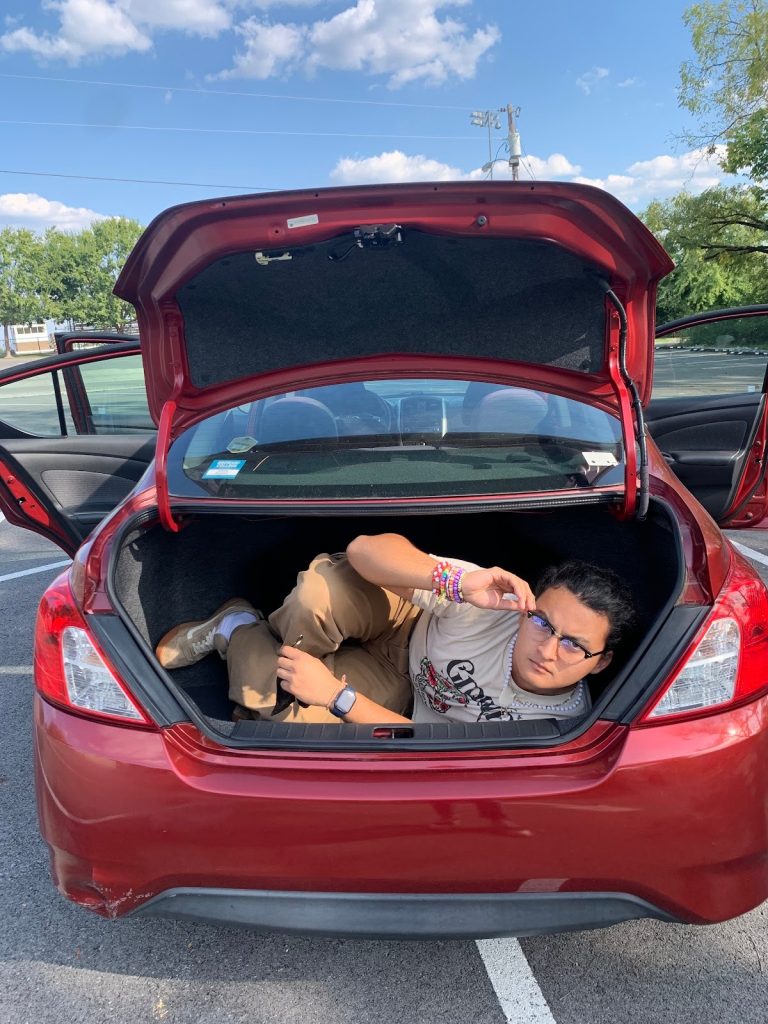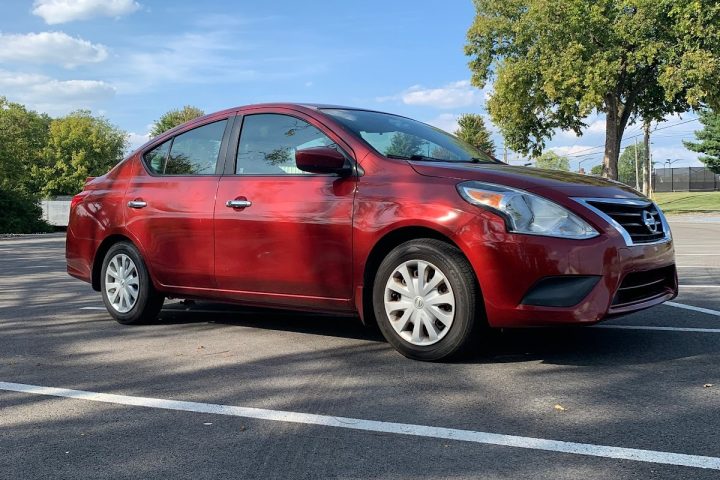by Connor Parks
2016 Nissan Versa SL Sedan, owned by Omar Caballero Cárdenas
Want to see your ride featured? Feel free to submit it by contacting connor.parks@centre.edu.
There’s some cars you’ll just never forget your first ride in. The mundane second generation Nissan Versa sedan, unexpectedly enough, is one of those cars for me. It was supposed to be nothing more than my first experience in a DiDi- Mexico’s cheaper, better Uber- for a quick ride back to my homestay in Mérida. When Fernando pulled up in his silver, worn down 2017 Versa, I had no expectations of glory or a notable trip at all. I couldn’t have been more wrong. Crank windows down, we flew down side streets somewhere between Calles 62 and 59 at over twice the speed limit, reggaeton on full blast as we nearly plowed over a few moped riders. This was life at its very finest, all in the stiff backseat of a 2nd-gen Versa sedan.Whipping onto Avenida Campestre, I forked over my 48 pesos and got out onto the safety of the curb. In one sense, I felt lucky to be alive; in another, I found myself wishing it never would have ended at all.
There’s a reason, then, why the Nissan Versa has long been one of Mexico’s most popular cars (being the country’s #1 best seller for the past 3 years): it’s cheap, dependable transport which can take any punches thrown at it. This success is clearly reflected in the U.S, where its popularity has stayed consistently high since its 2006 introduction. Next year, new Versas are even slated to sell at pre-pandemic annual numbers, something unheard of in such an unstable economy. And despite being nearly 10 years old now, I think Omar’s Versa is a prime example of just how great a Versa can be if properly maintained. The car was passed down to him last year just 3 weeks before school began from his mom, the previous owner, who had just upgraded to a new Nissan Rogue. With only 96,811 original miles, it was bought secondhand from an AutoNation in Fort Lauderdale before being driven up to Louisville after moving a few years ago. Aside from a few scratches and dents from over the years, Omar says the car has never had any major issues, attributing this to his mom’s tendency to “take good care of the things she owns.” With how well this example has been preserved, this is entirely evident.

As far as features go, I felt the Versa in this spec was surprisingly well equipped. The SL is the second highest trim level, but it came with plenty of standard options that I wouldn’t have expected in a sub-$18,000 car when new. The door locks, windows, and mirror adjust keys were all automatic, and the steering wheel came complete with lots of useful features, such as volume controls, Bluetooth calling, and even cruise control. Omar also recently installed an aftermarket remote start feature which allows for easy access from a distance. Aside from the bass, which started to crackle out at high volume, the sound/radio system was fantastic, and we even figured out how to use the factory bluetooth call system mid-review. The AC worked very well, and the temperature-adjust dials seemed fit for a much nicer car. The center console came with four whole cupholders, way more than I expected. A few features, however, made Nissan’s cost-cutting measures a bit more obvious: the glovebox was very cheap plastic, the rear seat had no center armrest, and only the passenger side had a seatback storage pouch. These hardly retracted from the car’s comfort, though. It was surprisingly tall, and both the front and rear seats were plush enough, if not a tad firm. Finally, the trunk was a bit shallow, but had more than enough room to fill with anything you might want. See above image for reference, I suppose.
The drive, meanwhile, proved about what I expected. This Versa’s 1.6 litre 16-valve inline 4-cylinder engine produces a whopping 109 horsepower, and there were definitely a few times I felt I was squeezing out all 109 when flooring it to 55 on a straightaway. The ride itself was quite smooth, even if the power started to taper off past about 50. Despite a perpetual alignment issue which doesn’t seem to improve even after multiple services, the only real vibration came from the car straining to get up to speed past 2nd gear. The brakes were firm and comfortable, but lurched every once in a while if you put your foot down slightly off. The 4-speed automatic option gets around 35 MPG highway and 26 city, which definitely reflected in the time I spent sitting in red lights behind the wheel. As a daily commuter, I would be fully satisfied with a ride quality like this: nothing flashy, but dependable and inoffensive.
After such a surprisingly pleasant experience with Omar’s Versa, I’m reminded of just how fun an ordinarily “boring” car can be if you really take the time to play around with it. In a sense, this is the essence of every Versa: an unbelievable adaptability that you can enjoy in any capacity. Not only can you use this cheap little car for anything and get away with it, but you almost feel obligated to push it to its limits. Throw it around, go 30 over, pack it with 5 people and all your dorm supplies, and you’ll be rewarded with great dependability and fantastic memories. This is a car whose potential to serve should be maximised at every opportunity. As a true “world car”, it’s sold (in some iteration) in every market worldwide, which means that this great experience is shared by millions around the globe. Despite its mundaneness, it manages to be a little car that bridges people: a tool used to get from point A to point B, and somehow to also do everything else life has to offer in between. So if you’re in the market for something like a Versa, just remember to squeeze the life out of it, and choose your own adventure. Any other treatment just wouldn’t do it justice.

